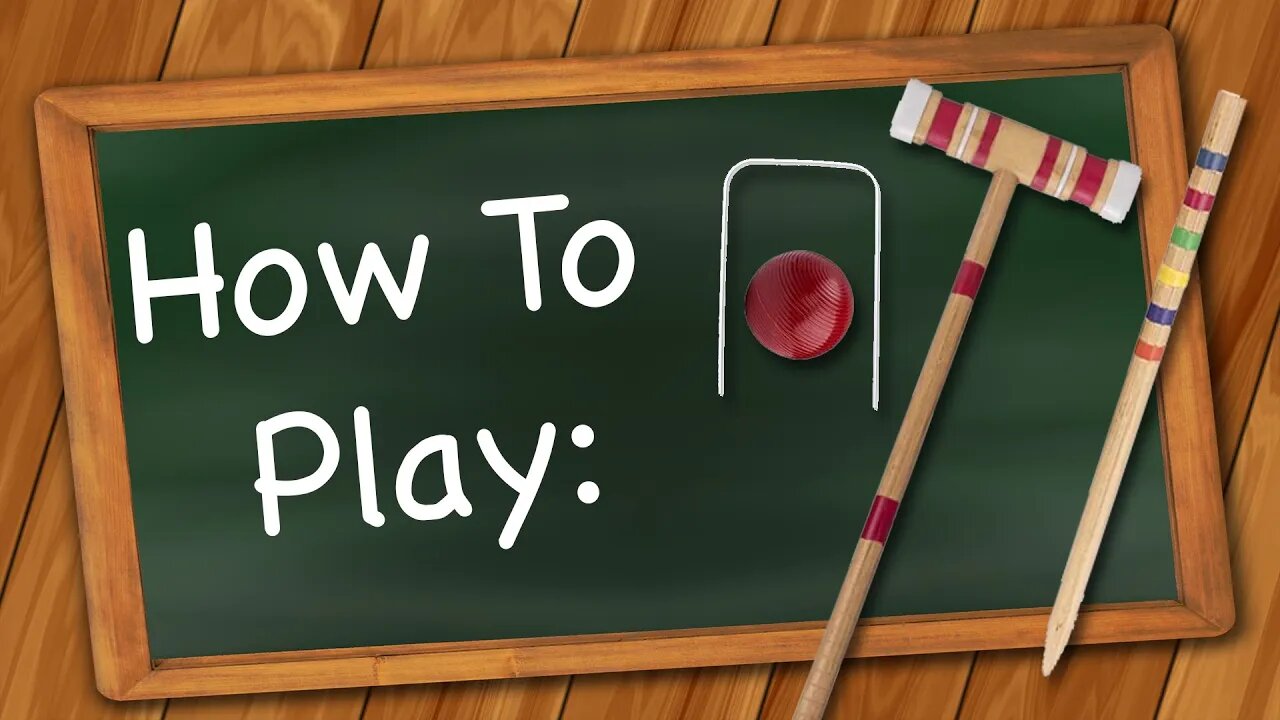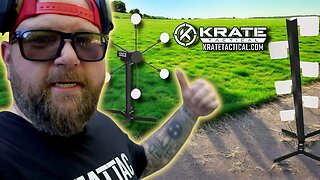Premium Only Content

How to play Croquet
Learn the rules to the outdoor sport Croquet quickly and concisely - This visually rich video has no distractions, just the rules. To learn how to setup the game, check out this video: https://youtu.be/jIKqVtBG4Kw
Don't own the game?
Buy it here: https://amzn.to/3eK1cDs (This Amazon Affiliate link directly supports me)
RULES:
The object of the game is to be the first player to hit their ball through all the wickets and two stakes around the court in the correct order and in the correct direction.On your turn you get one shot to hit your ball as hard or soft as you like. You may only hit the ball with the striking end of the mallet. When you run out of shots your turn is over.
All balls start the game from a spot halfway between the finishing stake and the finishing wicket. The order of play is indicated by the colored stripes on the finishing stake going from top to bottom. Pick a player order and assign players colors based on the order. After all balls have started the game, play continues in the same order until a ball makes it all the way around the court and hits the finishing stake. When a ball is out of the game, the remaining balls continue in the same order, skipping the ball that has finished the course.
If a player plays out of turn, there is no penalty. Any ball moved during the out-of-turn play is replaced to its position prior to the error and play recommences properly. If the striker takes a swing at his/her ball and misses entirely, the miss counts as a shot and the turn ends, unless the striker had a second "bonus" shot. If the striker's mallet accidentally hits another ball, other than the striker’s ball, the shot must be replayed, but with no loss of turn.
Each ball can score wicket and stake points for its side only by going through a wicket or hitting a stake in the proper order and direction. Going through a wicket out of order or in the wrong direction is not counted as a point gained or lost. A ball that scores its wicket or stake during another ball’s turn earns the point for its side, but no bonus shot is earned as a result. A ball scores a wicket point only if it comes to rest clear of the playing side of the wicket. If a ball passes through a wicket but rolls back, it has not scored the wicket. If a ball travels backwards through its wicket to get position, it must be clear of the non-playing side to then score the wicket in the correct direction.
The wicket has a playing side, that is, the direction coming from the last played wicket, and a non-playing side, the direction between it and the next played wicket. You can look at a wicket to determine the position of the ball. Only once a ball fully clears the plane of the playing side of a wicket does it count as a score.
Ball “A” has not started to score the wicket.
Ball “B” has started to score the wicket.
Ball “C” has not scored the wicket.
Ball “D” has scored the wicket.
The striker earns one bonus shot if the striker’s ball scores a wicket or hits the turning stake. The striker earns two bonus shots if the striker’s ball hits another player’s ball. This is called a "roquet". You are not allowed to use the same ball for another roquet, that ball is called “dead”, until you clear your next wicket or on the start of your next turn, whichever comes first.
Two bonus shots are scored by striking another ball, the first of these two shots may be taken in any of four ways:
1. You may position your ball a mallet-head distance or less away from the ball that was hit and then hit your ball. This is called "taking a mallet- head".
2. While the ball is in a position of contact with the ball that was hit, the striker holds their ball steady with their foot or hand, called a "foot shot" or "hand shot", then they may strike their ball and transfer the energy to the other ball, sending it off any direction they choose.
3. While the ball is in a position of contact with the ball that was hit, with the striker’s ball not held by foot or hand, the striker may hit their ball and both balls will move, this is called a "croquet shot".
4. The striker may hit their ball wherever it stopped after the roquet. If a boundary is in use and the striker’s ball went out of bounds, the ball should be measured in one mallet length from where it crossed the boundary.
The second bonus shot after a roquet is an ordinary shot played from where the striker’s ball came to rest, called a "continuation shot". Bonus shots may not be accumulated. The maximum number of bonus shots earned by a striker is two. Upon earning a bonus shot by scoring a wicket, hitting the turning stake, or roqueting another ball, any bonus shot previously earned is lost. For example, if a ball roquets a ball and in that same stroke the striker’s ball hits another ball, the 2nd ball hit is not a roquet and remains where it comes to rest (with no deadness incurred on that ball). The striker only has 2 bonus shots...
-
 2:21
2:21
Triple S Games
1 year ago $0.06 earnedHow to play Cruise Pawns
917 -
 LIVE
LIVE
Flyover Conservatives
11 hours agoProven Steps to Remove P*rnographic Content from Schools - Karen England with Take Back the Classroom | FOC Show
276 watching -
 LIVE
LIVE
The Shannon Joy Show
2 hours ago🔥🔥Trump’s Big Bad Bull-Shit Budget Betrayal Bill Prohibits States From Interfering With Federal AI Programs For Ten Years! Rage Against This America. With Special Guest Dr. William Makis.🔥🔥
366 watching -
 8:54
8:54
BlackDiamondGunsandGear
18 hours ago🔴 These Targets Were NOT ready for what i Brought...
1972 -
 LIVE
LIVE
Grant Stinchfield
44 minutes agoChicago City Hall... 'Whites Need Not Apply'
131 watching -
 LIVE
LIVE
Will Johnson
53 minutes agoTriggered by Trump: The Left’s Obsession Continues
88 watching -
 DVR
DVR
Bannons War Room
3 months agoWarRoom Live
18.2M4.78K -
 40:51
40:51
Rethinking the Dollar
1 hour agoThe Big Beautiful Bill: Why Washington’s ‘Tax Cut’ Is a Debt Bomb in Disguise | Morning Check-In
202 -
 1:01:00
1:01:00
VINCE
3 hours agoAnother World Leader Schooled In The Oval Office | Episode 49 - 05/22/25
213K156 -
 LIVE
LIVE
LFA TV
13 hours agoLFA TV LIVE STREAM - THURSDAY 5/22/25
7,691 watching